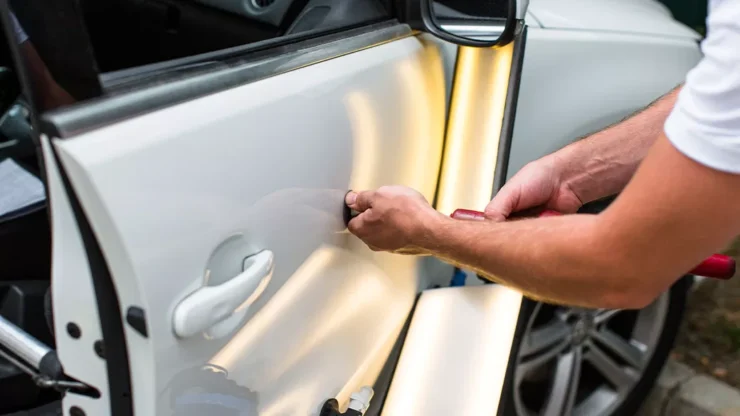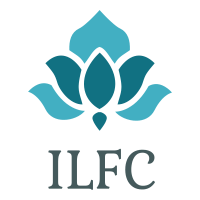Imagine you’re walking towards your car, ready to start your day, only to discover an unsightly dent on the side panel. It’s frustrating and disheartening, but fear not! The world of automotive repair has witnessed a revolution with the advent of Paintless Dent Repair (PDR) tools. These remarkable tools have become the go-to solution for achieving flawless dent removal without the need for costly and time-consuming traditional methods. In this blog post, we will delve into the power of PDR tools, exploring their benefits, different types, and how to maximize their effectiveness. Whether you’re a professional auto technician or a passionate DIYer, PDR tools will soon become your trusted allies in restoring your vehicle’s pristine appearance.
Benefits of Using PDR Tools over Traditional Methods

Traditional dent removal methods often involve extensive labor, expensive materials, and time-consuming processes that can leave your wallet considerably lighter. In contrast, PDR tools offer a more efficient, cost-effective, and environmentally friendly approach to dent repair. By utilizing these tools, technicians can access the damaged area from behind the panel and gently massage it back into its original shape without disturbing the vehicle’s original paint. This technique not only saves time but also maintains the integrity of your car’s finish, preserving its resale value. These tools truly revolutionize the world of dent repair by providing a faster, more affordable, and non-invasive solution.
Step-by-Step Guide on Using PDR Tools for Dent Removal

Now that we have a basic understanding of PDR tools let’s walk through a step-by-step guide on how to use them effectively for dent removal:
– Step 1: Assess the damage – Carefully examine the dent’s size, shape, and location. This evaluation will help determine the appropriate PDR tools to use.
– Step 2: Gain access – Depending on the dent’s location, remove any necessary panels or components to gain access to the backside of the dent.
– Step 3: Choose the right tool – Select the PDR tool that best matches the dent’s characteristics. Rods are ideal for larger dents, while glue pullers work well for shallower dents.
– Step 4: Apply pressure – Using the selected PDR tool, apply gentle and controlled pressure from behind the dent, slowly massaging the metal back into shape.
– Step 5: Inspect and repeat – Regularly inspect your progress to ensure the dent is gradually disappearing. Repeat the process if necessary, adjusting your technique as needed.
– Step 6: Finish and refine – Once the dent is nearly imperceptible, use fine-tuning tools, such as blending hammers or tap-downs, to perfect the surface and create a seamless finish. These tools allow you to delicately tap the area to level out any remaining imperfections, ensuring the dent is completely eliminated.
– Step 7: Clean and inspect – After the dent removal process is complete, thoroughly clean the area to remove any residue or debris. Take a step back and inspect your work from different angles to ensure a flawless result.
Common Mistakes to Avoid When Using PDR Tools

While PDR tools are incredibly effective, it’s essential to be mindful of potential pitfalls that can hinder your dent removal process. Here are some common mistakes to avoid:
– Applying excessive force: PDR tools rely on precision and finesse. Applying too much force can lead to further damage, such as paint cracking or stretching the metal. Remember, patience and gentle pressure are key.
– Neglecting proper lighting: Adequate lighting is crucial for accurate dent assessment and repair. Insufficient lighting can cause you to miss subtle imperfections or make errors in judgment. Always ensure you have appropriate lighting conditions before proceeding.
– Rushing the process: Dent removal requires time and attention to detail. Rushing through the process can result in subpar repairs. Take your time, follow the steps diligently, and aim for perfection.
– Using incorrect tools: Each dent requires the appropriate PDR tool for optimal results. Using the wrong tool can lead to ineffective repairs or even cause additional damage. Familiarize yourself with the different types of PDR tools and select the one that suits the dent you’re working on.
Future Advancements in PDR Tools and Technology

The field of PDR tools and technology continues to evolve, with ongoing advancements that promise even more efficient and precise dent removal solutions. Some of the future developments to watch out for include:
– Automated PDR Systems: Researchers and manufacturers are working on developing automated PDR systems that utilize robotics and artificial intelligence. These systems will be capable of scanning and analyzing dents, selecting the appropriate tools, and performing repairs with minimal human intervention.
– Advanced Imaging Technologies: Imaging technologies such as 3D scanning and computer vision are being integrated into PDR tools. These advancements will enhance the accuracy of dent assessment, allowing technicians to visualize and analyze the damage more comprehensively.
– Smart PDR Tools: PDR tools equipped with sensors and data tracking capabilities are on the horizon. These tools will provide real-time feedback on pressure application, dent progress, and optimal techniques, enabling technicians to make more informed decisions during the repair process.
– Lightweight and Flexible Tools: Manufacturers are continually improving the design and materials used in PDR tools to make them lighter, more ergonomic, and adaptable to various dent shapes and sizes. This will enhance technician comfort and maneuverability, ultimately improving the quality and efficiency of repairs.
– Integration with Mobile Apps: Mobile applications are being developed to complement PDR tools, providing access to instructional videos, dent assessment tools, and troubleshooting guides. These apps will serve as valuable resources for technicians, enabling them to enhance their skills and stay updated with the latest techniques and technologies.
Conclusion

PDR tools have revolutionized the world of dent removal, offering a faster, more cost-effective, and non-invasive alternative to traditional methods. The ability to access dents from behind panels and gently massage the metal back into shape has transformed the repair process, saving time and preserving the integrity of the vehicle’s original paint.
Embrace the power of these tools and unleash their potential to restore your vehicle’s flawless appearance, ensuring that those frustrating dents become mere memories of the past.

